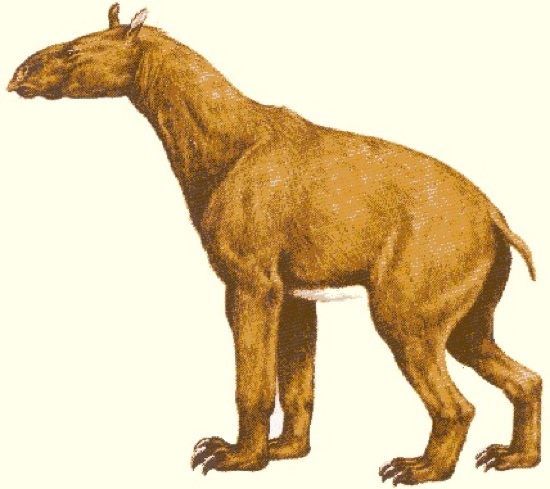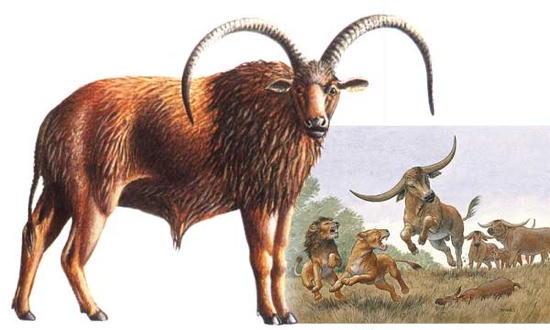 Weird Stuff
Weird Stuff  Weird Stuff
Weird Stuff  Health
Health Ten Confounding New Inventions from the World of Biomedicine
 Creepy
Creepy 10 Death Superstitions That Will Give You the Creeps
 Movies and TV
Movies and TV 10 Movies That Get Elite Jobs Right, According to Experts
 Weird Stuff
Weird Stuff 10 Times Real Laws Were Based on Bizarre Hypotheticals
 Animals
Animals 10 Inspiring Tales of Horses Being Human
 Mysteries
Mysteries Top 10 Haunting Facts About the Ghost Ship MV Alta
 History
History 10 Surprising Stories About the Texas Rangers
 Humans
Humans 10 Philosophers Who Were Driven Mad by Their Own Theories
 Miscellaneous
Miscellaneous 10 Video-Game-Worthy Weapons and Armors from History
 Weird Stuff
Weird Stuff 10 Warning Labels That Exist Because Someone Actually Tried It
 Health
Health Ten Confounding New Inventions from the World of Biomedicine
 Creepy
Creepy 10 Death Superstitions That Will Give You the Creeps
Who's Behind Listverse?

Jamie Frater
Head Editor
Jamie founded Listverse due to an insatiable desire to share fascinating, obscure, and bizarre facts. He has been a guest speaker on numerous national radio and television stations and is a five time published author.
More About Us Movies and TV
Movies and TV 10 Movies That Get Elite Jobs Right, According to Experts
 Weird Stuff
Weird Stuff 10 Times Real Laws Were Based on Bizarre Hypotheticals
 Animals
Animals 10 Inspiring Tales of Horses Being Human
 Mysteries
Mysteries Top 10 Haunting Facts About the Ghost Ship MV Alta
 History
History 10 Surprising Stories About the Texas Rangers
 Humans
Humans 10 Philosophers Who Were Driven Mad by Their Own Theories
 Miscellaneous
Miscellaneous 10 Video-Game-Worthy Weapons and Armors from History
10 More Little Known Prehistoric Monsters
Seeing as the previous prehistoric monster list was a hit and I’m very happy about it, I decided to submit the list of the monsters which deserved a spot in the list (and which I did consider) but didn’t get selected at the end. Thanks for the comments on the first list, enjoy this one, and happy Easter!
The Basilosaurs were primitive whales that looked rather like sea serpents, with small, reptilian-looking heads and very long and slender bodies. They lived during the Eocene, a time of warm oceans, so they didn’t have to store great amounts on fat to keep their body temperature in cold waters as modern day whales do. Basilosaurs were the top predators of their time, feeding on anything they could catch, including sharks and smaller whales. The largest Basilosaurs were in the 20-30 meter long range. An interesting fact is that, when the first basilosaur remains were found, they were thought to belong to a giant sea lizard or snake, hence the dinosaurian-sounding name!
Argentavis was the largest flying bird that we know of; it had a wingspan of 8.5 meters! That’s larger than most known pterodactyls. Argentavis lived in South America and looked basically like a giant vulture; it belonged to the group of teratorns, which were similar to today’s condors but better adapted for a predatory lifestyle, instead of just scavenging on other animal’s kills. Some scientists believe that Argentavis’ smaller relatives were possibly the inspiration for the Thunderbird legends of Native Americans. But Argentavis itself was never seen by humans, for it went extinct 6 million years ago.
A gigantic armored fish that ruled the oceans during the Devonian period, long before sharks took over. This monster could grow up to 10 meters long and had jaws shaped like double blades; it had one of the most powerful bites of all times and some scientists believe that it could probably bite through metal if it was alive today! It was also protected by a thick plate armor that made it rather slow compared to modern day sharks, but since most of its prey weren’t too fast either, that wasn’t necessarily a problem. There was only one thing Dunkleosteus was afraid of; larger members of its same species. Indeed, there is evidence that these fish ate each other once in a while.
The Chalicothere was a prehistoric relative of horses, but instead of hooves, it had sharp claws that were an useful weapon against predators.
In order to keep the claws from wearing out, the Chalicothere walked on its knuckles, like an ape, and it probably looked like a strange cross between a horse and a gorilla, or perhaps a giant sloth. This amazing beastie lived in Africa, Eurasia and North America during the Eocene to Pliocene periods, and despite its monstrous looks, it was completely vegetarian.
Although closely related to scorpions, these monsters actually belonged to a different group, the eurypterids, which ruled the oceans during the Ordovician period, and existed for millions of years before finally going extinct at the end of the Permian period. These giant marine bugs looked like a bizarre cross between a scorpion and a lobster, with a tapering tail armed with either a venomous harpoon-like spine or a flat swimming fin, depending on the species. They were able to survive on land, but spent most of their time underwater, where they fed upon any smaller creature they could catch. The largest sea scorpions could grow up to three meters long or more!
Mosasaurs are often thought to be marine dinosaurs, but they are actually close relatives to today’s lizards and snakes. These reptiles ruled the oceans during the late Cretaceous period, and were extremely voracious; among the prey animals found in the stomach cavity of mosasaurs are sharks, giant squid, and smaller marine reptiles, including other mosasaurs. They had many razor sharp, serrated teeth (even in the roof of the mouth!) and could grow up to 20 meters long! That’s bigger than the biggest carnivorous dinosaurs, making mosasaurs the largest known predators of the Late Cretaceous (sorry, T-Rex…)
Doedicurus was a relative to today’s armadillos, but it could grow up to the size of a VolksWagen Beetle (around 4 meters long and weighing up to 2 tons), and had a long tail armed with a deadly, spikey club, quite similar to those used by knights during Medieval times. Fortunately, it was a vegetarian; its deadly tail club was a defensive weapon only, and it came handy against the blood thirsty predators it shared its habitat with, such as sabertoothed cats and gigantic jaguars. Doedicurus lived in South America during the Pleistocene and became extinct about 11.000 years ago.
Elasmotherium was a gigantic rhinoceros that lived in the steppes of Asia during the Pliocene and Pleistocene periods. At 7 tons, it was as heavy as a Tyrannosaurus rex! This formidable beast had one single, two meter-long horn coming out of its forehead, and some scientists believe that it was the inspiration for the first unicorn stories, which were told within the creature’s former range. (Personally I think it’s a neat idea, much better than a corny little pony, but that’s just me…) Elasmotherium is also noted for its legs, which were longer than those of other rhinos and allowed it to gallop at high speeds despite its incredible size. It is possible that this incredible beast had no enemies at all once it reached its adult size.
Technically known as Varanus priscus, Megalania was a gigantic lizard closely related to the Komodo dragons of our days. It was however much larger, up to 7 meters long, maybe more, and armed with a set of extremely sharp, serrated teeth most similar to those of meat eating dinosaurs. Just like its living relatives, Megalania seems to have been venomous (monitor lizards were recently discovered to produce venom, which combined with nasty bacteria in their saliva explains the Australian aborigin saying that “a goanna’s bite does never heal”). Its venomous bite and razor sharp teeth allowed Megalania to kill prey as large as the rhinoceros-sized marsupials that roamed Australia during the Pleistocene. But what makes this reptile really scary is that it coexisted with humans, and probably ate them once in a while before finally going extinct 40.000 years ago.
It is kind of surprising that pliosaurs had to wait until the airing of famous TV show Walking with Dinosaurs in 1999 to become famous. Known since 1841, these humongous reptiles were the absolute rulers of the Jurassic and early Cretaceous seas, and actually, they include the largest predatory animals known to science. Some of them, such as Liopleurodon and Kronosaurus could grow up to 10, 15 or even 18 meters long, and fragmentary remains and bite marks on the bones of other marine reptiles suggest that the largest were within the 20-25 meter range! Indeed, pliosaurs were my initial choice for the first place in the previous list, but being the avid dinosaur lover that I am, I couldn’t resist the temptation to put Spinosaurus instead. Oh well…
Pelorovis was an old relative of today’s ill-tempered Cape Buffalo. It was however much bigger, being up to 2.10 meters tall at the shoulder and with almost ridiculously long horns. Fossilized Pelorovis horns are about one meter long, but when the animal was alive, they were covered on a keratinous sheath that increased their length to over two meters! If Pelorovis was, personality-wise, similar to its living relative, then it probably was one of the most dangerous creatures of its time. It became extinct quite recently, about 4000 years ago. That means it was still roaming the plains of Africa when the Great Pyramid of Egypt was built!



















